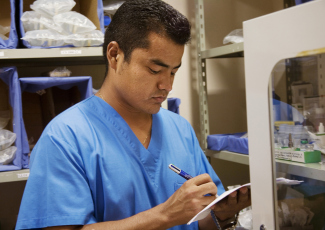Hospital and College Build Nurse Pipeline
By Sarah Asp Olson
May 5, 2016
Nebraska community college teams up with a regional health care provider to help keep nursing students in the community.
Central Community College (CCC), in Grand Island, Nebraska, has been intentional about building partnerships with local high schools. The college has dual-enrollment programs, called career pathways, that encourage high school students to get a jump on career and technical programs as early as junior year.
Pre-nursing is one popular career pathway, along with advanced manufacturing and automotive technology, says Marcie Kemnitz, CCC’s dean of instruction for health sciences.
High school students interested in pre-nursing take the ACT and then apply to CCC’s nursing program, which has a waiting list that averages two years. Once on the list, students begin taking general education courses through CCC while simultaneously earning a high school diploma.
When CCC’s pre-nursing pathway program caught the eye of Grand Island’s medical center, CHI Health St. Francis, a new partnership was born.
“St. Francis came to us saying they were in need of nurses and had difficulty hiring and retaining nurses,” says Kemnitz. “They wanted to be able to support nursing students from our program so they could employ them at St. Francis.”
The college and the hospital have developed a program, called Grow Our Own, to do just that. Five high school students have been selected for the pilot program, which launches this fall.
How the program will work
High school students interested in the Grow Our Own program apply to St. Francis, which makes the ultimate selection. The hospital plans to accept up to five high school students per year. St. Francis pays for students’ tuition and fees throughout the program; in return, nurses agree to work at the medical center for three years after graduation.
“The student will take [general education] classes while in high school in preparation for the nursing program,” Kemnitz says. “As long as they meet the eligibility and the scores, they’ll start the nursing program right after graduation.”
In addition to financial support, St. Francis also offers students mentorships with current staff members, who “introduce [students] to St. Francis and what a working environment is going to be there,” Kemnitz says. The students also will be encouraged to work as nursing assistants while they are nursing students.
As older nurses retire and rural health care facilities continue to grapple with shortages, partnerships like this one can meet the needs of all involved.
“We couldn’t do this on our own, nor could St. Francis do this on their own,” says Kemnitz. “It’s really identifying how we can best take the strengths of each of us and our assets and combine them to be successful for students. Not only do the students benefit, but so does the college and the facilities and the community.”








